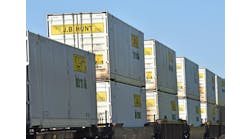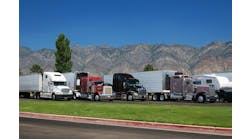Although Hurricane Katrina wreaked unprecedented havoc on New Orleans and other Gulf Coast cities, the national U.S. media has focused almost exclusively on the political reaction. And yet the real story is the resilience of America's supply chain, as well as the efficiency of the rebuilding efforts throughout the ravaged region.
Chris Weeks, for instance, knows disaster when he sees it. As a veteran of the Asian tsunami relief effort at the beginning of 2005, Weeks was again on loan from his employer DHL (www.dhl.com) to assist with international aid efforts following Katrina. The effort along the U.S. Gulf Coast was better organized, he observes, in part because the Federal Emergency Management Agency (FEMA) (www.fema.gov) was very clear about what it would and would not accept.
There were no random commodities coming in, says Weeks, so the situation resembles more of a demand pull than a supply push, which is how he describes the Asian relief efforts. The volunteers, working out of a U.S. Air Force reserve base in Little Rock, Ark., didn't always have complete visibility of what was coming next, but when goods arrived, they were in better condition. More goods were palletized or received in air containers, which made handling easier. Working on the air base provided a controlled environment that limited the distractions and also provided some basic handling equipment.
How has Hurricane Katrina directly affected your maritime shipments?
Shifted freight from New Orleans to Houston 33%
Shifted freight to East Coast ports 17%
Shifted freight to West Coast ports 14%
Shifted freight to other ports 6%
Decreased use of intermodal throughout Gulf region 25%
Increased use of intermodal throughout Gulf region 6%
Source: LogisticsToday.com
One of the critical shortages in Sri Lanka, Weeks told Logistics Today earlier this year following the tsunami, was material handling equipment. Even when they could find equipment, the operators would take the keys with them when they left because they didn't want anyone using the lift trucks when they weren't there.
"We learned to hot wire the lift trucks," Weeks admits now. The situation in Little Rock was much better. The Disaster Resource Network (www.drnglobal.org) team hired eight lift trucks which arrived within four hours and, even more important, "We had control of them," says Weeks.
How did the post-Katrina experience compare to the Asian relief efforts? One critical point was the availability of flatbed trucks in Little Rock. Following the Asian tsunami, the number and type of vehicles available to deliver aid were limited. Often, the relief teams had to take palletized goods and break down the pallets to load them on small trucks for distribution.
In Little Rock, the goods came in and were turned quickly and sent to one of four distribution centers in the target zone. Weeks says he rounded up as many flatbed trucks as possible, which proved to be much more efficient for loading. He offers the example of an AN-124 that arrived at the air base. The plane has a capacity of 110 tonnes and can take as long as 12 hours to unload if it is full of unpalletized goods. The relief team was able to turn the cargo in three hours.
The DHL Disaster Response Team in Little Rock operated from September 7-22 and consisted of 20 DHL and DHL/Danzas employee volunteers. During that time, 35 flights arrived from 18 different countries bringing aid coordinated by the USAID (www.usaid.gov), which had commissioned DHL to handle the on-ground logistics. DHL sent 115 trucks from Little Rock to the affected areas in Louisiana, Mississippi and Alabama. Total volume of outbound relief supplies was 5.2 million pounds.
One lesson learned from both relief efforts is the importance of not allowing any backlogs to occur. "When goods come in, handle it immediately and get them into the pipeline," Weeks emphasizes. "Don't leave them for the next shift to handle."
Communications were also improved this time around. A major disruption to relief efforts in Asia was the constant barrage of questions from media, Weeks says. No doubt, being on a military installation in Arkansas helped control access, but DHL also provided a public relations person to keep media and stakeholders informed of how efforts were progressing.
Weeks offers praise for the volunteers, USAID and the U.S. Air Force reservists who were part of the relief effort. The process went so efficiently that an additional 40 to 50 DHL employees who volunteered were not needed, and Weeks was back in his Brussels office just two weeks after beginning the operation.
For the future, Weeks suggests that if the U.S. government is looking at the military as a resource for disaster relief, it should not overlook the private sector as well. The industry system is important, he says. There are plenty of trained logistics professionals in the private sector who can assist with setting up warehouses and providing equipment and expertise.
He suggests a structure similar to the civil reserve air fleet (CRAF) which commits certain civilian assets which can be commissioned when needed. The CRAF was used in both Persian Gulf wars to supplement military airlift. A similar effort — including logistics resources — could provide core resources in disaster relief. Many of the logistics companies, including FedEx, UPS and DHL/Danzas, responded to the post-Katrina relief effort, Weeks points out.
Learn more about disaster relief efforts at www.logisticstoday.com/maritime
Shipping containers at the Port of New Orleans are tossed about the staging area by the winds and waters of Hurricane Katrina. Photo: Win Henderson/FEMA


